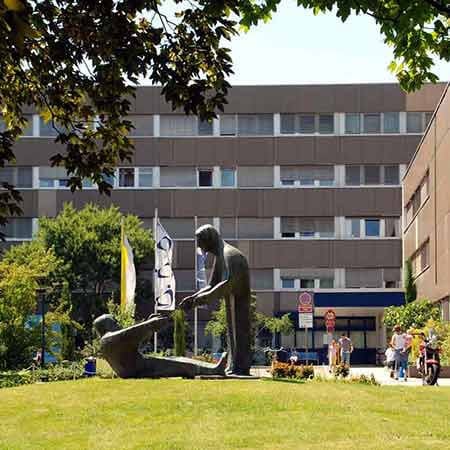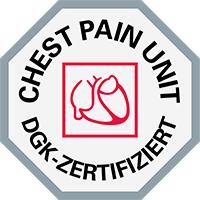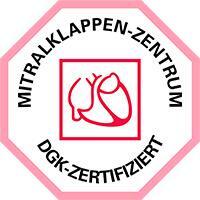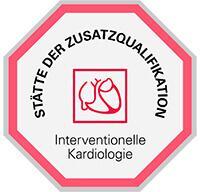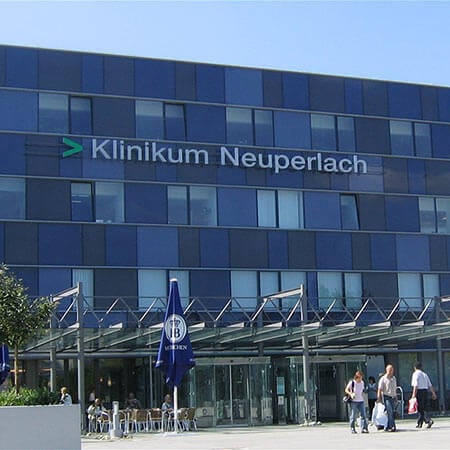Stokes-Adams syndrome implies a complex of symptoms caused by a sharp decrease in cardiac output and cerebral ischemia in patients with severe rhythm disturbances. It manifests as syncope, seizures, ventricular fibrillation, and asystole. A diagnosis is established by the presence of a characteristic clinical picture, changes in the electrocardiography, and the results of daily monitoring. The treatment consists of resuscitation measures at the moment of sudden attack and subsequent therapeutic restoration of normal heart function.
Content
- What is Stokes-Adams syndrome?
- Why does the syndrome occur?
- Symptoms of Stokes-Adams syndrome
- Treatment of Stokes-Adams syndrome
- Prognosis
- Treatment of Stokes-Adams syndrome in German hospitals
- The cost of treatment in Germany
What is Stokes-Adams syndrome?
Stokes-Adams syndrome is a pathological condition accompanied by sudden bouts of unconsciousness resulting from an acute heart rhythm disorder leading to cerebral ischemia. According to studies, this heart disease is observed in 70% of patients suffering from atrioventricular blocks and in 40% of patients with atrial fibrillation and various heart rhythm disturbances.
The frequency and severity of seizures can vary significantly. Some attacks may include mildly fainting, while others may be arrhythmic, with ventricular fibrillation, absence of pulse, and blood pressure irregularities. The duration of the attack may range from a few seconds to a few minutes. Once the heart rate normalizes, a person immediately regains consciousness, but often does not remember what happened. In severe medical cases, up to 100 seizures per day may be observed.
The underlying cause of the pathology is a sharp reduction in cardiac output, causing slowed blood flow, an insufficient supply of oxygen, and nutrients to organs and tissues. The work of the CNS is disturbed, and fainting occurs. A little later there are convulsive muscle contractions, indicating pronounced oxygen deprivation.
Prolonged seizures, especially those provoked by ventricular fibrillation, can lead to multiple organ failure. If minimal blood flow is preserved (with blockages or arrhythmias), the disease is milder.
Why does the syndrome occur?
Structural changes occurring in the cardiovascular system, as well as disorders occurring provoked by external factors, lead to the onset of heart disease. These include overdose of antiarrhythmic agents, occupational intoxication with organochlorine compounds, and ischemic myocardial changes. In addition, the syndrome may form as a result of age-related degenerative changes. Seizure in Stokes-Adams syndrome may be initiated by conduction disorders, heart rhythm disturbances, or impaired contractile function.
Conduction disorders are the most frequently noticed etiologic factor of Stokes-Adams syndrome. They develop with incomplete AV block transitions into complete AV block. The atria contracts are influenced by impulses emanating from the sinoatrial node, and ventricles are influenced by it. The partial atrioventricular block along with the impaired condition of sinus rhythm and elevated heart rate are possible to be a provoking factor.
Occurring due to heart rhythm disturbances, an attack is detected when the heart rate rises or falls excessively. Fainting can be noticed already at a heart rate of 40-45 bpm. The condition can also be potentiated by atrial fibrillation, specifically, if the latter has never occurred before. Permanent types of arrhythmias rarely contribute to the appearance of Stokes-Adams syndrome symptoms.
Insufficient contractile function can also cause the appearance of the attack. Myocardial muscle tissues contract uncoordinatedly, separately, and at a very high periodicity. This prevents blood release, leading to the circulatory arrest and, in some cases, to clinical death. It can occur together with electrolyte balance disorders, be idiopathic (when the overall condition of the patient can be considered satisfactory), or be the result of factors of mechanical influence.
Symptoms of Stokes-Adams syndrome
A typical seizure, occurring with Stokes-Adams syndrome, is represented by the rapid onset and a changing sequence. Within the first 3 seconds of the onset, the patient develops a preconscious state. Dizziness, headache, discoordination, and pallor suddenly appear. Abundant cold sweat appears on the skin. Palpatory evaluation of the pulse reveals sharply pronounced tachycardia, bradycardia, or an irregular rhythm.
At the second stage, the patient loses consciousness. Arterial pressure and muscle tone decrease. Acrocyanosis is visually determined, and small clonic convulsions occur. In ventricular fibrillation, there is a peculiar buzzing in the area of the xiphoid process of the sternum. Later, the convulsions intensify, become epileptic, involuntary urination, and defecation occurs. If the rhythm is not soon restored, clinical death occurs.
The abortive course of an attack with a decrease in symptoms within a short time interval can happen. The cerebral cortex does not have time to undergo pronounced hypoxia. This variant of an attack is manifested by dizziness, transient visual impairment, and confusion. Manifestations disappear without any medical help needed. Such varieties of Stokes-Adams syndrome are difficult to diagnose, since similar symptoms are observed with other conditions, including cerebrovascular diseases.
Depending on the intensity of the symptoms, there are several forms of the attack:
- Mild: there is no fainting, the patient has dizziness, impaired sensitivity, noise in the ears and head.
- Moderate: the patient loses consciousness, but there are no signs such as voluntary urination and defecation, there are no convulsions.
- Severe: the entire symptom complex is present.
And again, fainting is possible in a variety of diseases. Therefore, when making a diagnosis, Stokes-Adams syndrome should be differentiated with the following conditions: Meniere's disease, hypoglycemic state, stroke, orthostatic hypotension, transient ischemic attack of the brain, acute aortic stenosis, pulmonary embolism, systemic thromboembolism, and epilepsy.
Treatment of Stokes-Adams syndrome
Oxygen deprivation of the brain has a negative effect on the mental state and the central nervous system. The result of an attack can be death. Therefore, it is extremely important to diagnose the disease in a timely manner and conduct appropriate treatment.
Stokes-Adams syndrome is a dangerous condition that requires serious treatment because if an arrhythmia occurs, any attack can be fatal to the person. Medication treatment of Stokes-Adams syndrome is effective only if the heart rhythm disturbances are observed and can potentially be sufficiently controlled by medication. In all other cases, patients need a pacemaker.
The implantation of a pacemaker, which automatically switches on when the heart beats slow down, allows for steady support of the heart rhythm and the correct pace of myocardial contractions.
Pacemaker implantation performed in German hospitals refers to microsurgical operations and does not require general anesthesia. The surgery is performed under local anesthesia and takes less than an hour.
A special electrode made of a thin conductive alloy is passed through the subclavian vein into the right atrium under the imaging guidance so that it is in direct contact with the endocardium. The second end of the electrode is connected to a pacemaker, which is implanted under the skin in the subclavian region, under the small pectoral muscle, or (rarely) in the supracostal region. It is fixed in such a way that it is least uncomfortable for the patient. The type of cardiac pacemaker and its mode of operation are selected individually for each clinical case.
The main indication for pacemaker implantation is bradycardia or tachycardia with Stokes-Adams syndrome, atrioventricular block, etc. There are no absolute contraindications to pacemaker implantation, however.
After pacemaker implantation, the patient spends a few days in the hospital under medical supervision and then is discharged home. It is mandatory to visit the cardiac surgeon every three months in the first year after surgery, then once every six months, and once a year. Your cardiac surgeon will tell you more about your rehabilitation period and further life regimen.
Prognosis
The prognosis for patients with Stokes-Adams syndrome is favorable in the fast arrest of the attack and its abortive variant. Normalization of cardiac rhythm and cerebral blood supply within 1 minute of the clinical picture formation is not accompanied by delayed consequences.
A prolonged period of asystole or ventricular fibrillation reduces the likelihood of favorable recovery of coronary rhythm and increases the risk of ischemic brain damage.
Treatment of Stokes-Adams syndrome in German hospitals
German hospitals can be public, private, and university clinics. Public institutions receive funding from the municipality and offer a variety of services, from emergency care to treatment and rehabilitation. Private hospitals are usually engaged in providing services in a particular area of medicine. This maximizes patient satisfaction and improves the quality of medical care in Germany. Such institutions are funded by private individuals or organizations.
University hospitals specialize in the treatment of different diseases. Research work is carried out here, new knowledge is applied and theory is studied in depth. In addition to treatment, patients can participate in clinical studies and drug trials.
German doctors, working in different German hospitals, advocate the same principle that a timely diagnosis guarantees successful therapy.
Consider the following German hospitals for treatment of Stokes-Adams syndrome:
- St. Vincentius Hospital Karlsruhe-Academic Hospital of the University of Freiburg.
- Hospital Neuperlach Munich.
- University Hospital Ulm.
- University Hospital Heidelberg.
- Charite University Hospital Berlin.
If you need any additional information about the specific hospital, visit the hospital section of the Booking Health website.
The cost of treatment in Germany
Medical institutions in Germany base their work on a comprehensive and systematic approach. Doctors in German hospitals cooperate with each other, cooperate with laboratories, and exchange experiences. This allows achieving good treatment results and gives hope even to patients with severe cardiac conditions.
The cost of treatment in Germany can seem high, but one has to understand that the quality of treatment in Germany is also high. Prices are justified by the excellent quality of hospital facilities, qualification of doctors and nurses. The cost of treatment of Stokes-Adams syndrome varies, depending on the type of medical facility, the severity of the patient's condition, and the complexity of its treatment.
Minimal prices for the treatment of Stokes-Adams syndrome in Germany are as follows:
- The price for diagnostics is 522 EUR.
- The cost of treatment in Germany with pacemaker implantation is 3,892 EUR.
- The price for rehabilitation in German hospitals is 566 EUR.
Booking Health can calculate the cost of treatment in Germany for your clinical case. All you need to do is to fill in a request form on the Booking Health website.
Authors: Dr. Vadim Zhiliuk, Dr. Sergey Pashchenko
